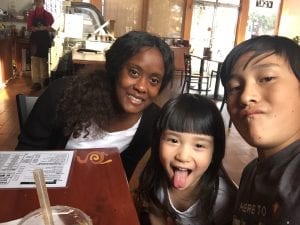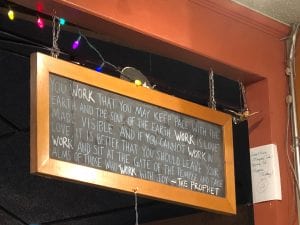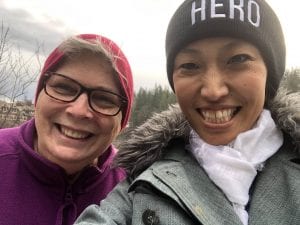
Three of my four kids 🙂
“Mom, I miss Aisha. Where is she now?” Nate, my 12-year old asked me casually over breakfast this morning.
Pause.
“Well, son, I actually don’t really know,” I replied
“Why not?” Nate asked.
“Well, Aisha hasn’t really been in contact with us for a little while,” explained my husband.
Pause.
“Is she in touch with Asha?” Nate asked.
“No, she isn’t really in touch with anyone in the family,” I replied, then adding for whatever explanation I could, “Sometimes, we have to make choices that are the best choices for us, even when it’s really hard. Aisha is an adult and even though we all love her, her choice right now is not to be in touch with us. She has my number, and I don’t have a way to contact her, so I know that if and when she’s ready, she will reach out. It makes me really sad, but I just have to trust that she knows what’s best for her right now.”
Pause. Nate doesn’t really say anything, or maybe he says a, “hmmmm.” The morning goes on. Jojo, oblivious to it all, tells me that she’s finished her whole breakfast, and waits for my congratulations and offer of a clementine to take in the car on the way to preschool. They leave for school as usual. I go on a run. I come back, and, in cleaning my office, I find a large manila envelope I’ve started called “Letters to Aisha.” I can’t read them today, but maybe I’ll add to the envelope later.
It’s a conversation that I’ve known was going to happen eventually — “Where is Aisha? Why don’t we see her anymore?” In the 16 months since we last heard from the older of my twin daughters, and the 3 years since we last saw her, it’s been a conversation that I’ve been bracing for. It went as well as could be expected. Perhaps, Nate will follow up later after he’s had time to think. And then we’ll have another conversation. I feel more assured that it will go okay because there’s nothing to say but the truth.
My son is close to his older sisters and loves them. We love them too. But our family story is complicated and has been difficult, as it is for many families, adoptive, biological, mixed. And, not wanting to tell my adult children’s stories for them, I don’t really talk about it much. But, today, the conversation happened, and I answered as honestly as I could without assuming more than is fair. It is what I believe, but it is not easy for me.
Being a mother is a challenge. Over the weekend, I was talking with my friend Yafa and we were talking about the insult that could hurt us the most. Mine was, “You’re a bad mother.” Objectively, I am aware that I am not a bad mother. I have done my best to care for all 4 of my children. I have loved them, sometimes beyond what was healthy for me, in the best ways I’ve known how, and provided them with everything I can to help support and sustain them. I have listened to them, and tried to understand their perspectives when we don’t agree. I have created safety through boundaries. I show up to places and events that are important to them as much as I can. I model the type of human being I’d like for them to be.
However, mothering, like many things in our society seems tied to how successful our children are or seem to be. Whenever something isn’t right for any of my children, I ask myself whether it was because of something I did or didn’t do. Even now, as my older daughters are adults, I wonder if there was something that I could have done while we were all together to have changed some of the outcomes in their lives and our family. For my younger children, when work keeps me away from a performance or when my daughter tells me on FaceTime that she really misses Mommy or when my son tells me (2 years after the fact) about how much of an emotional struggle 4th grade was for him, I wonder. I realize that my children are agents in their own lives; they all make choices and I have some say in the situations that my younger children face, but much less as they get older. I also know that they all have parts of their lives that I can’t and don’t see. I get this, but it is hard. It is hard because I love them to the core of my soul.
And because I love them so much, sometimes, when I feel like I’m failing them, the mom shame and guilt are real.
I don’t talk about this shame and guilt a lot because: 1) I never want to share my older daughters’ business. They are adults and had much of their privacy stripped away at different periods of their lives. Because I am protective of that privacy, I don’t want to talk about what’s going on with me in relation to their lives; 2) I’m not necessarily looking for reassurance. I mean, I know I’m doing the best I can. I know I’m not a bad mother. I get it. But sometimes, like with everything, I have to name it to let it go; and 3) Well, I like to avoid looking imperfect.
But that’s life. It is messy and complicated. For mothers. For working mothers. For academic mothers. For me.
And today, for this moment, I have the courage to be honest about what it’s like for me.
















